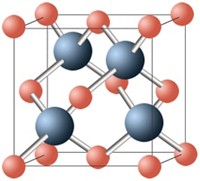Advertisement
Grab your lab coat. Let's get started
Welcome!
Welcome!
Create an account below to get 6 C&EN articles per month, receive newsletters and more - all free.
It seems this is your first time logging in online. Please enter the following information to continue.
As an ACS member you automatically get access to this site. All we need is few more details to create your reading experience.
Not you? Sign in with a different account.
Not you? Sign in with a different account.
ERROR 1
ERROR 1
ERROR 2
ERROR 2
ERROR 2
ERROR 2
ERROR 2
Password and Confirm password must match.
If you have an ACS member number, please enter it here so we can link this account to your membership. (optional)
ERROR 2
ACS values your privacy. By submitting your information, you are gaining access to C&EN and subscribing to our weekly newsletter. We use the information you provide to make your reading experience better, and we will never sell your data to third party members.
Materials
Thermoelectric Materials
Silicon nanowires transform heat into electricity
by Bethany Halford
January 14, 2008
| A version of this story appeared in
Volume 86, Issue 2

By forming silicon into discrete nanostructures, scientists have managed to transform the element from a poor thermoelectric material into a good one. The result could lead to inexpensive, energy-salvaging devices that harvest wasted heat and turn it into electricity.
Thermoelectric materials convert temperature gradients into voltages and vice versa. If one end of such a material is hot and the other is cold, a voltage is generated, which can then be used to create electrical power.
For a material to have good thermoelectric properties, however, it must be a good electrical conductor and a poor thermal conductor. Because bulk silicon is good at conducting both electricity and heat, scientists had ruled it out as a possible thermoelectric material. Two teams have now independently discovered that by nanostructuring silicon, they can reduce its thermal conductivity, making the material promising for thermoelectric applications (Nature 2008, 451, 163 and 168).
Groups led by Peidong Yang, of the University of California, Berkeley, and James R. Heath, of Caltech, both found that nanowires made of silicon have thermoelectric efficiencies that are comparable with those of the best commercial thermoelectric materials. According to Heath, nanostructuring also seems to confer drag upon the material's heat-propagating waves, or phonons, thereby improving its thermoelectric efficiency.
"Silicon is one of the most abundant elements, and there is already a multi-billion-dollar infrastructure for low-cost and high-yield processing behind it," Yang says. Compared with the best commercial thermoelectrics made of materials such as Bi2Te3, he adds, silicon is easier to process, less expensive, and environmentally benign.
Silicon thermoelectrics could also be easier to integrate into other silicon-based systems, Heath notes. "Having thermoelectrics that can be harnessed to recover heat generated by a microprocessor and fabricated on the same chip as the microprocessor could be extremely useful," he says. For example, laptop computer batteries get hot, and "that heat could potentially be recovered," Heath says.
Both Yang and Heath say that some engineering work is needed before their silicon nanowire thermoelectrics find practical applications, but Mercouri G. Kanatzidis, a thermoelectrics expert at Northwestern University, believes that they're on the right track. "It confirms a growing sense in the science community that proper nanostructuring of materials will yield very significant enhancements in thermoelectric performance," he says.





Join the conversation
Contact the reporter
Submit a Letter to the Editor for publication
Engage with us on Twitter